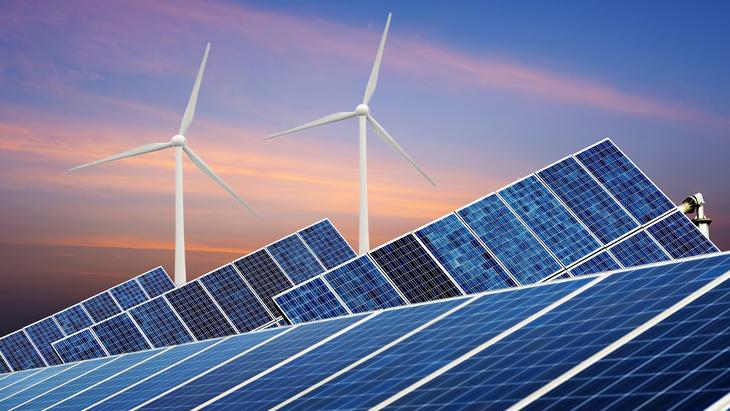The main associations of renewable energy producers denounce the intention of the State Lands Agency (ADS) to propose an emergency ordinance project to grant more than 4,000 hectares of land to certain companies in the state’s portfolio, on a discretionary basis, but also the lack of access to the Modernization Fund.
Thus, in a joint statement, RPIA (Romanian Photovoltaic Industry Association), RWEA (Romanian Association for Wind Energy) and PATRES (Employer’s Organization of Energy Producers from Renewable Sources in Romania) representing producers, developers and service providers and equipment in the renewable energy sector, with a total installed capacity of approximately 5 GW, call on the authorities to ensure a level playing field for all developers of renewable energy production capacity.
“RPIA, RWEA and PATRES express their concern over the intention of the State Domains Agency (ADS) to propose an emergency ordinance project to grant more than 4,000 hectares of land to certain companies in the state portfolio in order to develop capacities of energy production from photovoltaic and wind sources,” the press release states.
The associations say that “while reaching climate neutrality targets is a common desire, such a legislative change must comply with European competition and state aid rules; a direct allocation of land to certain companies is likely to negatively affect private investors in the field of renewable energy and the internal energy market as a whole, thus discouraging investment”.
“Such a measure must respect the principle of transparency and fair competition, which implies the organization of public tenders for the awarding of concessions or at least the definition of clear and non-discriminatory selection criteria; a direct negotiation between ADS and certain selected companies is not able to ensure such fair conditions of competition”.
Distortion of competition
The suggested changes distort competition in the energy market, as a result of the fact that private investors can only develop projects on areas under 50 hectares based on the restrictive interpretation of the land fund law by the Ministry of Agriculture and Rural Development (MADR), while ADS can concession much larger areas. In this context, the project can be classified as state aid, which implies the prior notification of the European Commission. Otherwise, there is the risk of opening an investigation procedure against Romania for violation of European norms, given that, according to art. 107 of the TFEU “aid granted by states or through state resources, in any form, which distorts or threatens to distort competition by favoring certain enterprises […]” are incompatible with the internal market.
Last but not least, the ADS proposal raises questions about how these capacities will be integrated into the national electricity transmission network, given that there is no plan to develop the necessary infrastructure, and the wind and solar farms presented do not provide for any solution for storing the energy produced.
Lack of access to the Modernization Fund
Additionally, the relevant associations criticize the operators’ lack of access to the Modernization Fund, which should support Romania’s energy transition, given the fact that private developers do not benefit from support for the integration of storage in their projects. Although developers can legally integrate storage, the cost is prohibitive. Moreover, the long-awaited contracts for difference (CfDs), which are supposed to boost investment in renewables, do not include the storage component.
In this context, the intention of the Romanian state to finance the construction of the Tarnița-Lăpuștești pumped storage hydroelectric plant from the Modernization Fund, which it has given up on several times in the past, is questionable. The current context implies the need for flexible and decentralized storage systems, which ensure the balance and security of the energy system, and the Modernization Fund must support projects that serve the energy transition, which lend themselves to the current development model.
Tarnița-Lăpuștești is a centralized project with a unique location, which makes it vulnerable to extreme weather phenomena – such as drought and floods – that can compromise the operation or safety of the facility. Also, the financial and time costs are very high, which is not cost-effective in terms of benefits and does not align with European and national 2030 targets.
RPIA, RWEA and PATRES express their hope that the projects proposed by the Romanian state authorities will be evaluated in relation to their impact on the development of renewable sources and on the achievement of Romania’s climate objectives and reiterate their willingness to dialogue with all actors involved in the energy transition and to actively contribute to identifying the best solutions to ensure clean, safe and accessible energy for all consumers.

